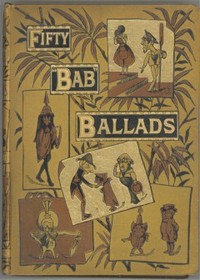Ballad: The Ghost, The Gallant, The Gael, And The Goblin
by“The Ghost, The Gallant, The Gael, And The Goblin” unfolds in a realm where fantasy treads lightly over reality, blending the charm of the eerie with the curiosity of the absurd. In the twilight edge of an unsettled suburb, a ghost and a goblin sauntered in uneasy companionship, each carrying a distinct energy. The ghost, a relic of melancholic tragedy, moved with quiet dignity, his presence evoking shivers and thoughts of long-forgotten sorrows. The goblin, on the other hand, brimmed with kinetic mischief, wearing chaos like a cloak, always moments from a grin or a prank. Their conversation, first lighthearted, turned into rivalry. Who, between them, could best inspire terror in the modern soul? This wasn’t about cruelty—it was about pride. Each believed his style—the ghost’s solemn horror or the goblin’s grotesque glee—had the stronger hold on the human imagination. And so, they agreed to test their talents.
Their target was a fashionable English gentleman, standing outside a tailor’s shop, radiating the calm detachment of someone utterly at ease. The goblin went first, shaping himself into impossible forms, leering with wicked invention, tumbling from sight and emerging in bursts of theatrical menace. Yet his efforts, loud and animated, had no effect. The man raised an eyebrow, offered a polite nod, and resumed studying his reflection in the tailor’s window. This unshakeable calm, far from frustration, fascinated the ghost. For days, the goblin persisted, altering his approach—using silence, surprise, or even poetic eeriness—but the Englishman remained unmoved. Even when the goblin spun his body into a wheel and rolled across cobblestones, the man merely stepped aside. The ghost watched, amused and intrigued, feeling the faint stirrings of opportunity. The contest was far from over, but the goblin’s methods, it seemed, had little hold on English composure.
Confident he could succeed where the goblin failed, the ghost proposed a change in subject. Rather than a polished townsman, he sought a Highland Gael—a rugged soul molded by stormy hills and ancient stories. If there was one capable of showing true fear or reverence for the spectral, it would be such a man. The goblin agreed, curious to see the ghost’s approach. They located their new target: a brawny Scotsman tending to his walking stick beside a wayside inn. The ghost emerged slowly, drawing mists around him, eyes hollow and luminous, his figure tall as the surrounding oaks. His voice echoed with the lament of centuries, whispering tales of betrayal, war, and curses never lifted. Where the goblin had relied on exaggeration, the ghost relied on resonance. It was fear not of being startled, but of being remembered.
But the Gael did not flinch. He paused, then looked at the apparition long and hard. His lips curled into a knowing grin. “You’re not the first ghost I’ve met,” he muttered. Then, with a respectful nod, he turned back to his drink. The ghost, for all his artistry, found himself as ineffective as the goblin. They had chosen strong men—men whose spirits were perhaps tempered by war, or dulled by modern distraction, or simply beyond reach. And yet, the failure wasn’t bitter. Both ghost and goblin found humor in it, perhaps even humility. It was not that they lacked skill, but that humans, in their unpredictability, had changed the rules of the game.
Their contest ended not with a winner, but with a lesson neither had expected. Humans, they realized, were no longer shaped by the fears that once held sway. Where shadows once controlled the imagination, now stood skepticism and resilience. And perhaps, deep down, a new kind of bravery—one born not from fearlessness, but from weariness, wit, or wonder. The ghost and the goblin, once rivals, now shared a moment of reflection. They had underestimated their audience. And as they wandered off into the deepening dusk, their laughter mingled—not from victory, but from the freedom of knowing that mystery still lingered, just not where they had expected it.
This tale, framed in whimsy and spectral humor, reminds readers that fear is not a universal formula. People cannot always be stirred by the same old stories or figures. Some carry legends in their bones and meet ghosts like old acquaintances. Others smile through horror because life itself has been stranger than fiction. The ghost and the goblin, for all their mischief, come to respect this complexity. In doing so, they stop chasing fright and begin to chase understanding. And perhaps, in the long shadows of fading day, that is the most haunting lesson of all.

